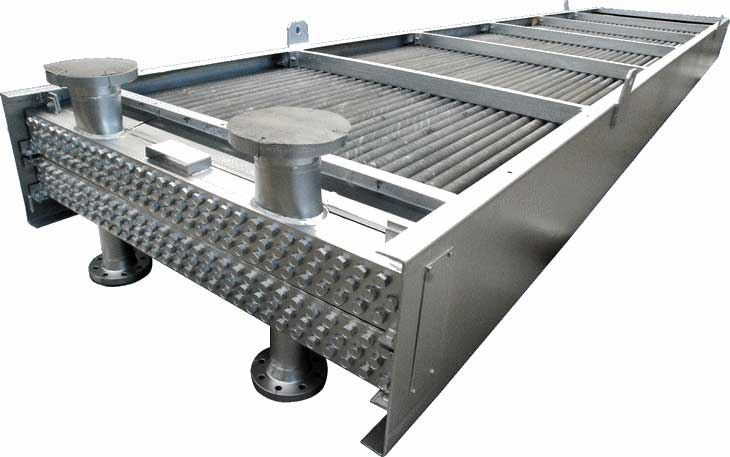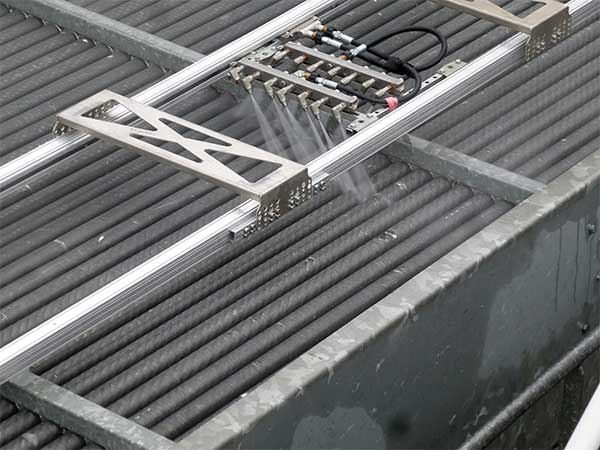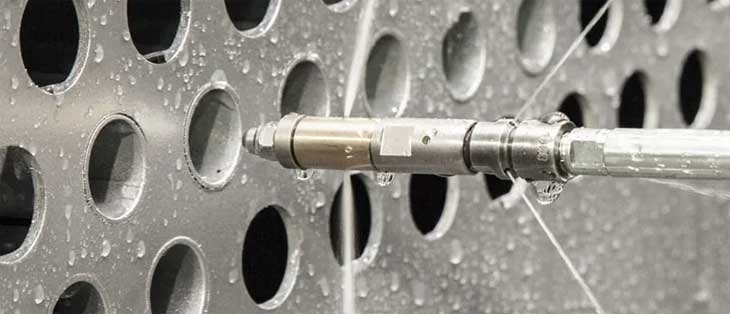Cleaning Air Cooled Heat Exchangers
Air-Cooled Condensers (ACC)
Air Fin Coolers (AFC)
Air-Cooled Heat Exchangers (ACHE)
Keeping ACHE or ACC air-cooled heat exchangers and specific parts clean, is very important to maintain quality and extend life.
This article discusses the dry and wet online cleaning process specially adapted for induced and forced air-cooled heat exchangers.

Dry Cleaning
The abrasive used consists of formulated sodium bicarbonate (also known as baking soda) with a crystalline structure that looks like granulated sugar to the naked eye as opposed to conventional powdered baking soda. The material is forced with compressed air through a jet unit equipped with a special nozzle.
The cleaning process is an extremely friable material that micro-fragments on impact, literally exploding surface materials without damaging the substrate. The unique properties of baking soda allow it to remove dust, grease, oil, soot, pollen and other contaminants without damaging the thin metal plate of the fins of the air-cooled heat exchanger tube. There are no other abrasives with the same properties.
The cleaning process is mainly used for cleaning "critical" air-cooled heat exchangers and allows these plants to restore their operating characteristics, which are close to design values.
This cleaning method has safety advantages. No one has to enter the plenum chamber anymore. That means no risk of accidents due to heat stress or running fans. In addition, this method does not use a high-pressure application. And no treatment of liquid waste is required.
Besides the safety benefits, there is the great advantage that cleaning can take place during operation, so there is no loss of production.
Wet Cleaning

The best practices for cleaning air-cooled heat exchangers (ACHE) or air-cooled condensers (ACC) depend largely on the configuration and design of the units and the degree of fouling, but as a standard guide to good practices, the following applies..
- It is always best to clean fin surfaces in the direction of airflow. Deposits accumulate thickest on the side where the air enters the heat transfer beam, whether the design is a "forced or induced" draft.
- Some companies clean with nothing but water, air or steam, depending on the level of contamination. With specially designed cleaning tools, contamination removal can reach all areas.
- For non-chemical, wet and dry, robotic and customized methods are available, to remove fouling from air-cooled heat exchangers.
- Critical point.. If you are considering a chemical method for cleaning ACHE or ACC, you must know the chemical composition and analysis of the scale and know that it is not inert.
- Chemicals or foam generally remain in the fins and other surrounding objects, and can cause further problems because they are rarely washed away properly.
- In addition, the fins are more than likely made of aluminum, which can withstand only the mildest chemical solutions before causing corrosive damage.
Related Post(s)

Clean heat exchanger tubes are essential to the functionality of shell and tube heat exchangers...